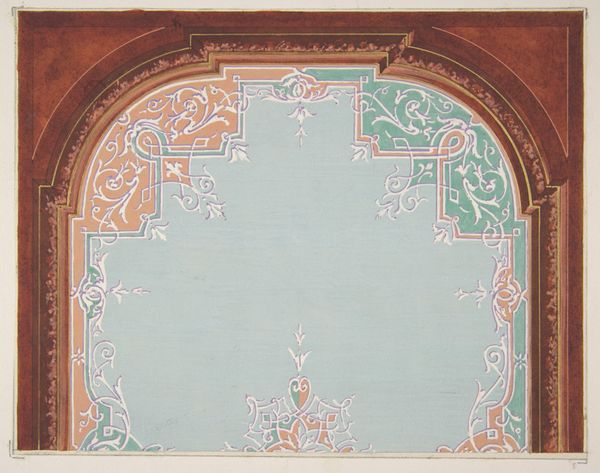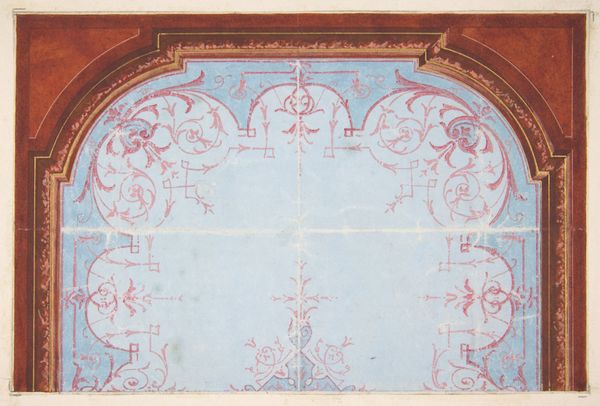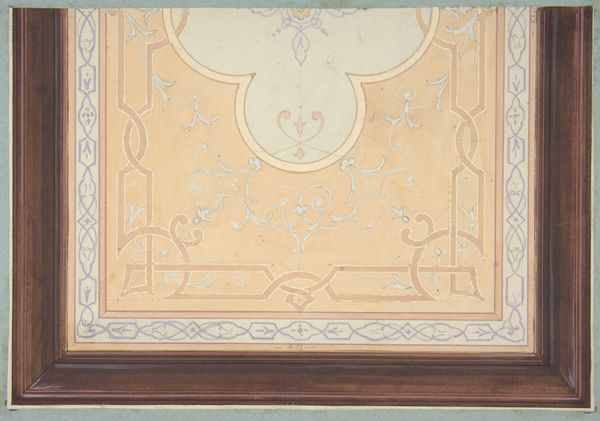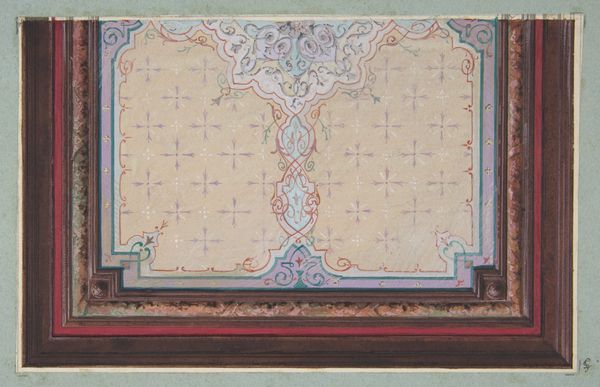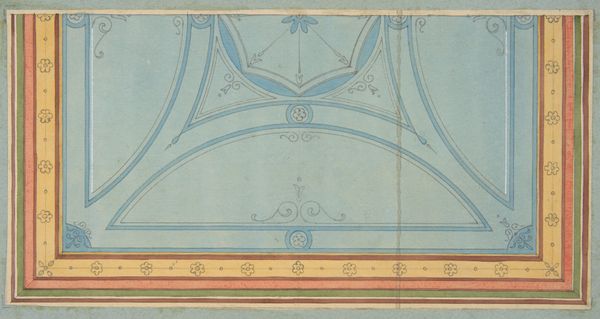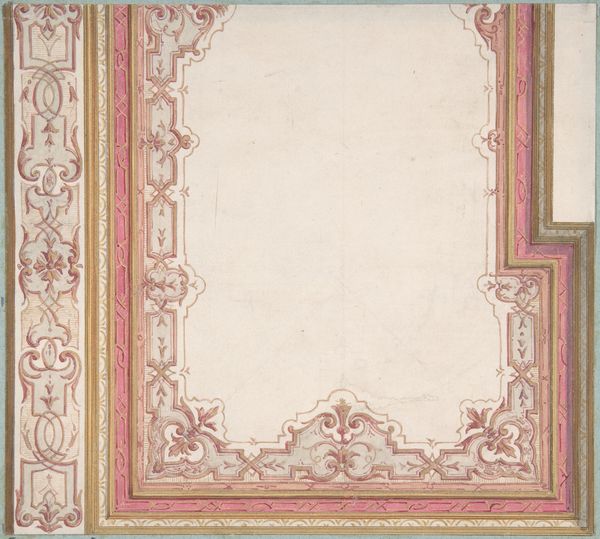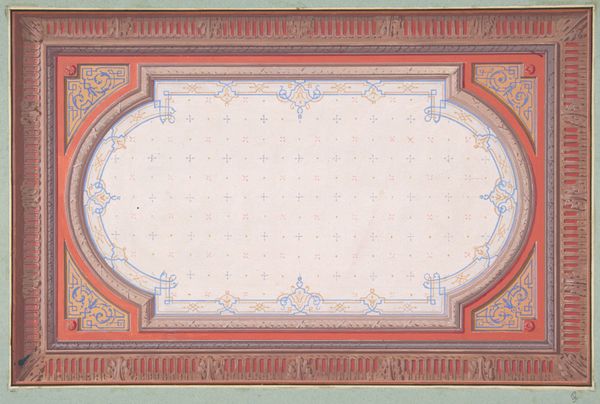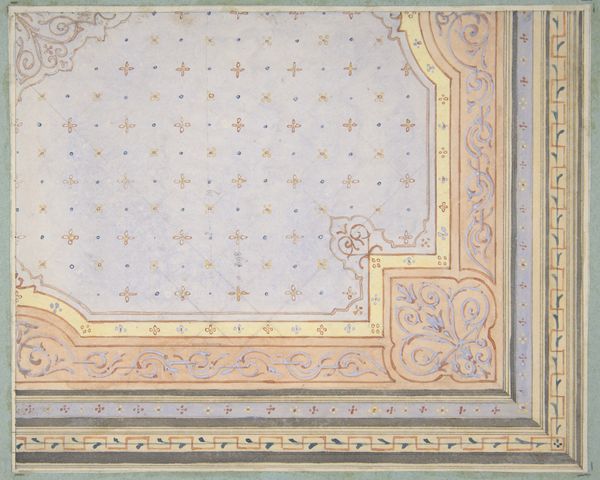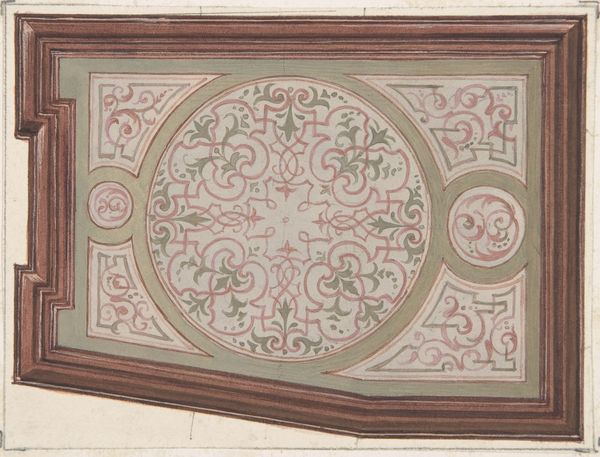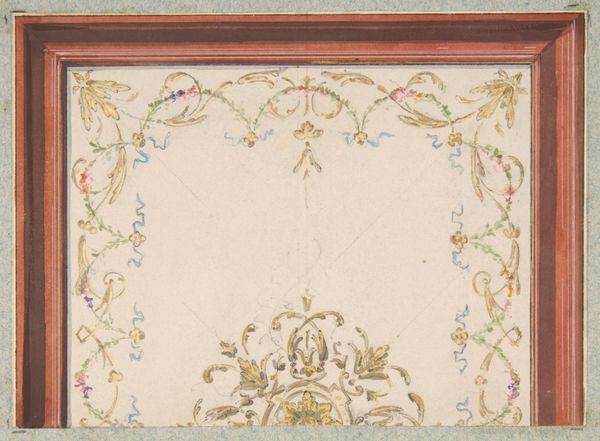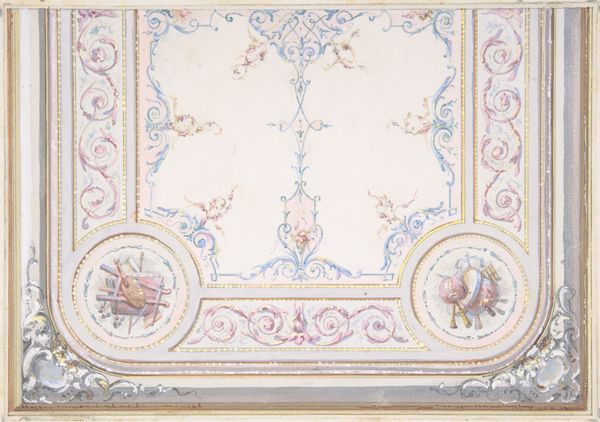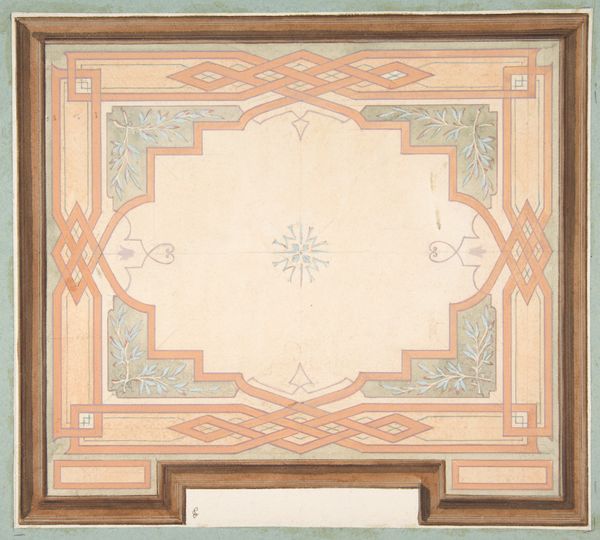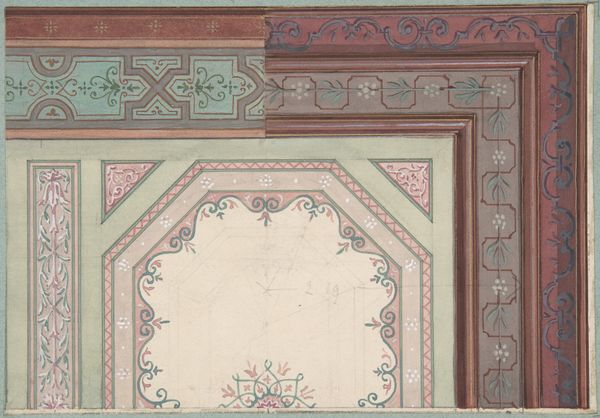
drawing, architecture
#
drawing
#
line
#
decorative-art
#
architecture
Dimensions: Overall: 10 3/8 x 14 3/4 in. (26.4 x 37.5 cm)
Copyright: Public Domain
Editor: So, here we have "Design for a Ceiling," made sometime between 1850 and 1900 by Jules-Edmond-Charles Lachaise. It's currently housed at the Metropolitan Museum of Art. The artist used drawing to depict what looks like a decorative ceiling. It feels like there's a real emphasis on ornate, maybe even aristocratic, tastes here. How do you interpret this work? Curator: What strikes me is the function of "decorative art" itself, and how it's often been relegated to the domestic sphere, historically associated with women and therefore deemed less 'important.' When we look at a design like this, we can ask, whose gaze is it intended for? And what values does it reflect back to them about hierarchy, about status, about what constitutes beauty? The piece dates to a time of great social upheaval – industrialization, shifting class structures… could this design also be a sort of longing for a more ordered past? Editor: That’s fascinating, I hadn't considered the social implications of something seemingly as simple as ceiling decor. Curator: It’s precisely in these seemingly 'simple' things that we often find the most telling clues about a culture’s anxieties and aspirations. This design probably adorned the ceiling of someone quite wealthy, someone trying to perform their class through art. It suggests a desire to construct a narrative of luxury, perhaps as a form of asserting identity in times of change. Where do you think the impulse of the artist factors into the intent and use of such a work? Editor: I imagine the artist being constrained to this rigid structure, serving wealth rather than art. Curator: Exactly! It raises all sorts of interesting questions about power, patronage, and artistic agency within unequal societies. Editor: I see how thinking about historical context reveals so much. Curator: Absolutely. Looking closely at art from the past forces us to think critically about the power dynamics that shape our world today.
Comments
No comments
Be the first to comment and join the conversation on the ultimate creative platform.
